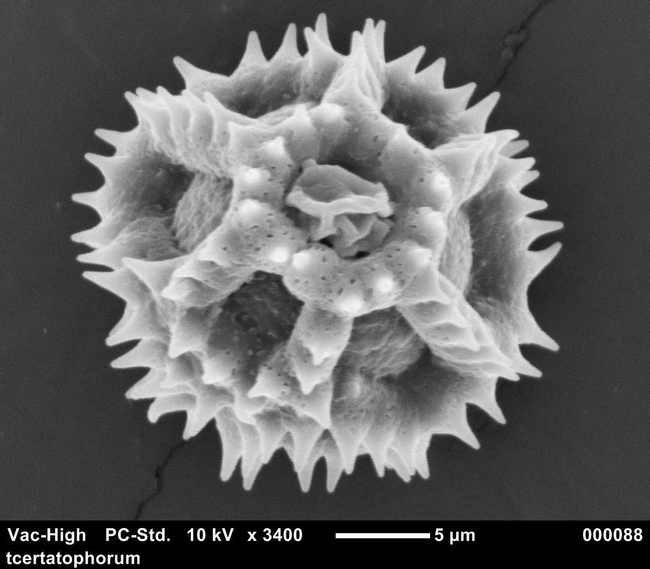https://news.missouri.edu/2020/bee-thankful-for-the-evolution-of-pollen/
‘Bee' thankful for the evolution of pollen
Missouri U. researchers discover wildflower's spiny pollen
adapts to help plants reproduce
Over 80% of the world's flowering plants must reproduce in order to produce new flowers, according to the U.S. Forest Service. This process involves the transfer of pollen between plants by wind, water or insects called pollinators -- including bumblebees.
In a new study, researchers at the University of Missouri discovered spiny pollen -- from a native wild dandelion species in the southern Rocky Mountains -- has evolved to attach to traveling bumblebees. Using a highly detailed electron scanning microscope, the research team could observe the microscopic surface of the spiny pollen, which otherwise looks like yellow dust to the naked eye.
"The spiny pollen actually acts like Velcro," Lynn said. "So, when bees are harvesting pollen for food, this pollen is sticking to their hair. It's a great example of mutualism where the plant needs the pollinator to reproduce and the pollinator needs the plant for its food."
The researchers plan to study how a bumblebee's hairs contribute to this process.
For more on how clever plants are, check out Michael Pollan's Botany of Desire.
